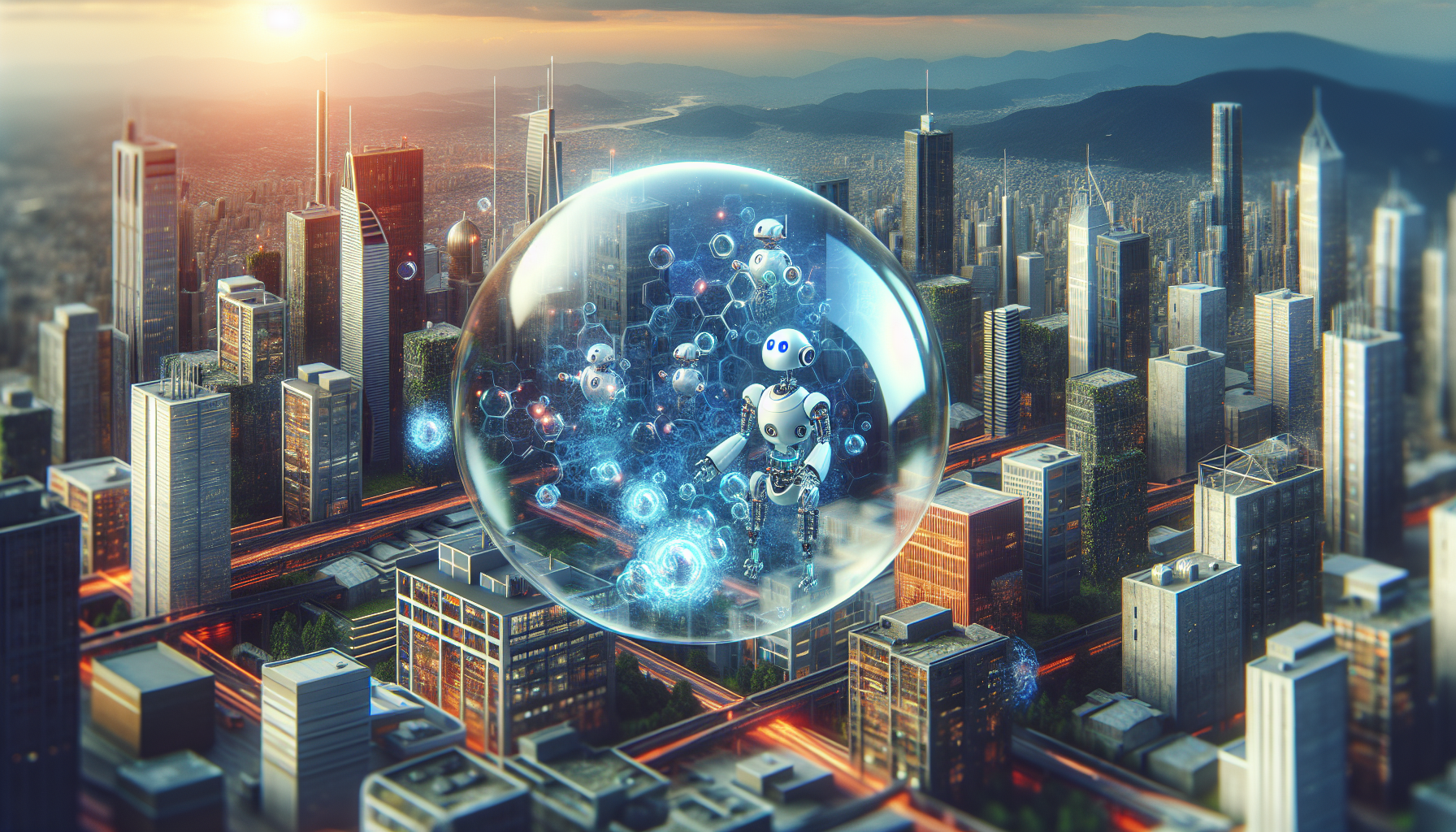Are We in an AI Bubble or Not?

Understanding the AI Industry’s Current State
Artificial Intelligence, often lauded as the future of technology and possibly humanity, is facing a reality check. Recent discussions have shed light on the juxtaposition between its monumental potential and the tangible challenges it must overcome. AI critics are vocal about their apprehensions, and examining these concerns offers a more nuanced understanding of where the industry stands.
AI, with its myriad applications spanning from healthcare to finance, has raised expectations to stratospheric levels. Companies and investors have poured billions into AI startups and research projects, leading to a surge reminiscent of the dot-com boom. However, some argue that this enthusiasm might be a double-edged sword. **Are we witnessing the onset of an AI bubble, or is this growth sustainable with substantive backing?**
The Inflated Expectations: Origins and Implications
The excitement surrounding AI is not unwarranted. Breakthroughs in machine learning, deep learning, and neural networks have dazzled both the public and investors. Yet, as with any revolutionary technology, the hype often outpaces the actual deliverable outcomes. **Why is there such a disparity between expectation and realization in AI?**
One primary reason is the overestimation of AI’s current capabilities. Popular media often portrays AI almost akin to science fiction, capable of thinking, reasoning, and even empathizing like humans. However, most AI systems today function under narrow parameters and are optimized for specific tasks. These systems lack the general intelligence that fuels the more fantastical projections. When the expectations are not met within the anticipated timeline, disillusionment can set in.
Financially, this disconnect manifests in the stock market. Companies with AI affiliations enjoy inflated valuations, sometimes not reflective of their actual technological advancements or financial health. This scenario bears a stark similarity to the dot-com bubble, where companies were overvalued based on their potential rather than their actual product delivery and profit margins.
**Understanding the risks**: Analysts and industry experts have begun cautioning about this potential bubble. The risk lies in not just financial losses but also a potential slowdown in AI innovation. If the bubble bursts, investments might dry up, research could face funding cuts, and the overall momentum could witness a stall.
Challenges Highlighted by AI Critics
Critical voices have been instrumental in pointing out various technical, ethical, and operational hurdles that AI needs to overcome. Here’s a deeper dive into these challenges:
**1. Technical Limitations**
While AI can handle specific, well-defined tasks, its adaptability and general intelligence are limited. Current AI models, including the likes of GPT-3, are powerful but struggle with transfer learning—the ability to apply learned knowledge to new, unfamiliar situations. This limitation is a significant roadblock in realizing truly autonomous AI systems.
**2. Interpretability and Transparency**
AI operates in a black box manner, where decision-making processes are not always transparent. This opacity creates trust issues. For businesses and users to rely on AI, understanding how these systems arrive at conclusions and predictions is crucial. This need for transparency ties directly into the broader context of accountability and reliability.
**3. Ethical Concerns**
AI can perpetuate and even exacerbate biases present in training datasets. Issues of fairness, discrimination, and accountability have become central to AI discourse. Ensuring ethical AI is not just a technical challenge but also a societal one, requiring input from diverse fields including law, sociology, and psychology.
**4. Scalability and Integration**
Deploying AI at scale, especially in industries like healthcare or finance, poses significant integration challenges. These sectors have intricate regulatory frameworks and existing infrastructures that AI systems must seamlessly integrate into. Issues of interoperability, data security, and compliance further complicate large-scale AI adoption.
**5. Resource Intensive**
Training sophisticated AI models requires enormous computational resources, translating to high energy consumption and substantial costs. As sustainability becomes a global imperative, the AI industry must seek greener and more efficient methods of research and deployment.
The Larger Story: Potential Beyond the Present Challenges
While it’s imperative to scrutinize the current AI landscape critically, it is also essential to apprehend the broader trajectory. The challenges faced today are not insurmountable hurdles but rather stepping stones for the next phase of technology evolution.
AI’s potential to revolutionize industries is undeniable. For instance, in healthcare, AI can predict disease outbreaks, personalize treatment plans, and even assist in complex surgeries. In the automotive industry, AI is propelling advancements in self-driving technology, promising safer and more efficient transportation. In finance, AI algorithms are enhancing fraud detection, investment strategies, and customer service.
The future vision of AI is one where it serves as a symbiotic assistant in various aspects of human life, augmenting capabilities rather than replacing them. The road to such a future involves rigorous research, interdisciplinary collaboration, and addressing ethical implications head-on.
**Mitigating the bubble risk**: To ensure long-term sustainability, it’s crucial for investments to be directed towards solving core AI challenges rather than just capitalizing on its hype. This approach will foster a more resilient and genuinely innovative AI industry.
**Collaboration and Regulation**: Governments and regulatory bodies must collaborate with tech companies to frame policies that encourage innovation while safeguarding ethical standards. Initiatives should focus on promoting transparency, inclusivity, and accountability.
The industry must also prioritize education and public awareness. Demystifying AI for the general populace will bridge the gap between expectation and reality, fostering a more informed and realistic perception of what AI can achieve.
How IntelliAgente Can Help Your Business
Navigating the complexities of AI requires both an understanding of its limitations and insights into its potential applications. **IntelliAgente** offers a bespoke solution tailored to enhancing your customer support and sales processes. By leveraging advanced AI capabilities, IntelliAgente can streamline operations, improve efficiency, and provide a competitive edge in today’s digital marketplace.
For businesses looking to integrate AI effectively, IntelliAgente provides an accessible entry point. Interested? Get in touch with us to explore the potential of AI in transforming your business operations and subscribe to our newsletter for the latest in AI advancements.
